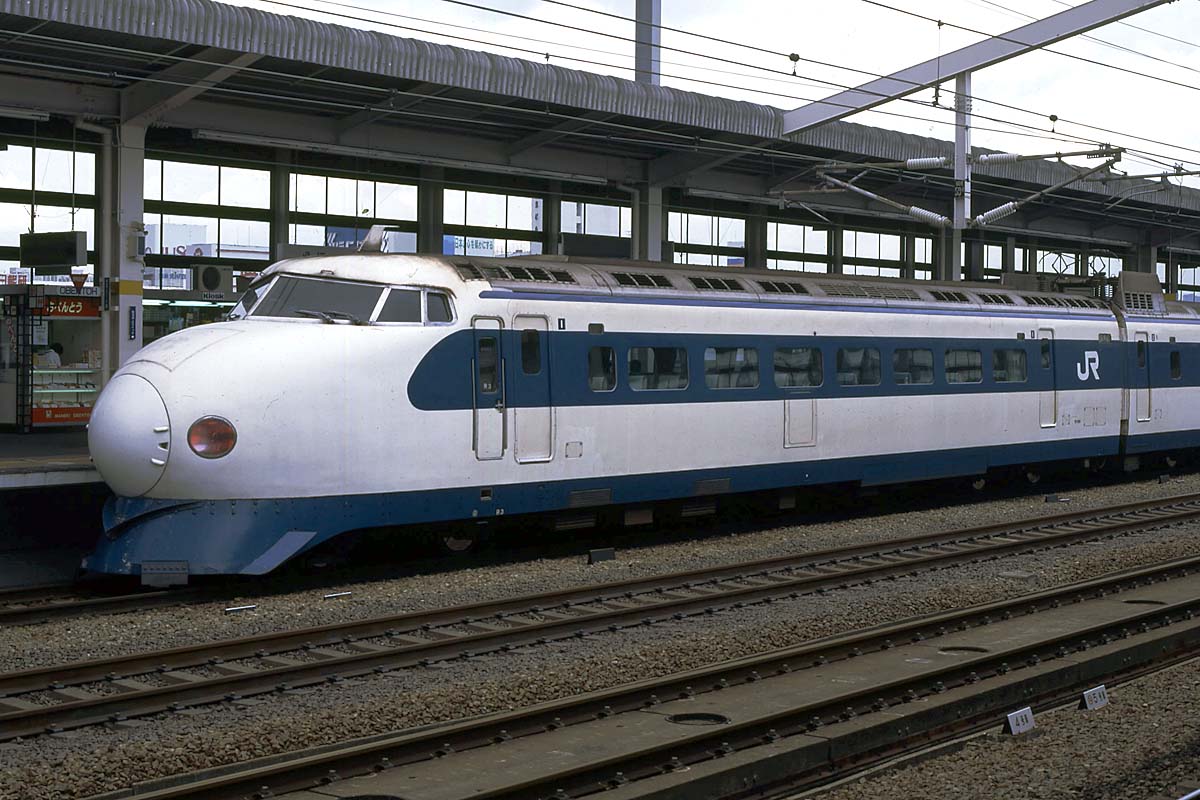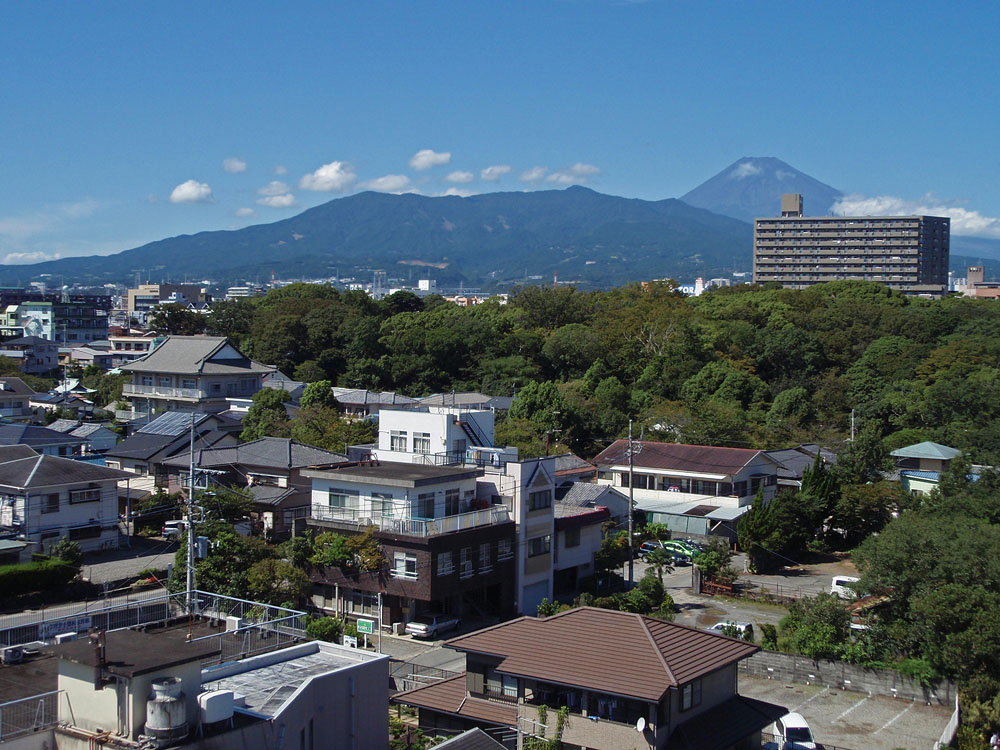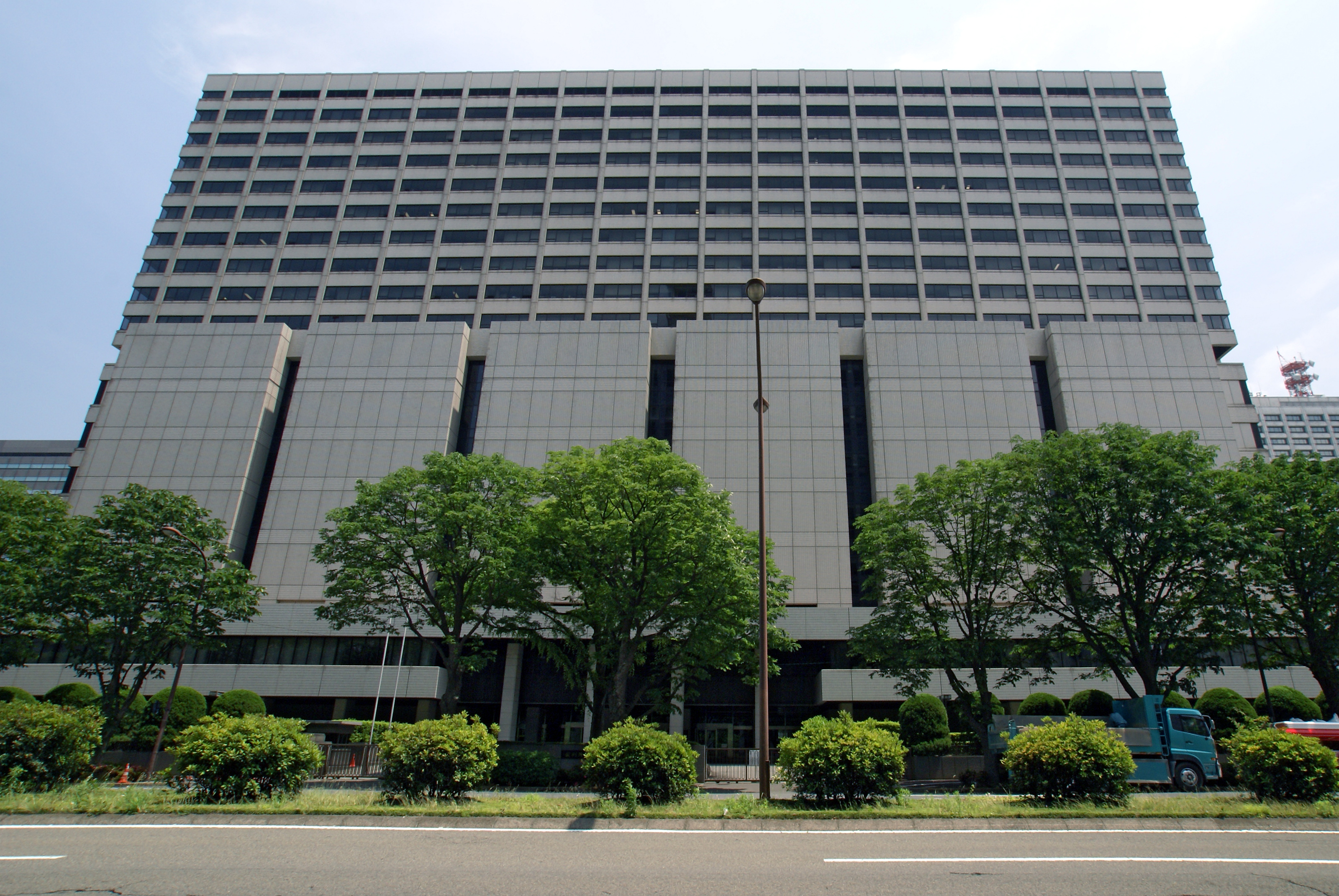|
Mishima Station Incident
The was an incident that took place at Mishima Station in Mishima, Shizuoka, Mishima, Shizuoka Prefecture, Shizuoka, Japan on 27 December 1995, when a 17-year old male student fell to his death after getting caught in a car door of a departing Shinkansen train. It was the first passenger fatal accident in the history of the Tokaido Shinkansen. Summary At 6:30pm local time, after using a public phone on the platform, 17-year old student Yusuke Kawarazaki attempted to board a westbound Kodama (train), Kodama service when his finger got stuck in the door as it closed. The Shinkansen train then left the station, dragging Kawarazaki with it. The student was dragged around before he fell to his death, suffering from a fatal head injury. It was the first fatal incident on the Shinkansen since it began operation in 1964. Overview At the time of the incident, all passenger doors on Shinkansen trains were kept closed using an airtight seal. On this particular train, a 0 Series Sh ... [...More Info...] [...Related Items...] OR: [Wikipedia] [Google] [Baidu] |
Mishima, Shizuoka
Mishima City Hall is a city located in eastern Shizuoka Prefecture, Japan. , the city had an estimated population of 109,803 in 49,323 households, and a population density of 1800 persons per km². The total area of the city is . Geography Mishima is located in far eastern Shizuoka Prefecture, at the northern end of Izu Peninsula and in the foothills of Mount Fuji. Surrounding municipalities *Shizuoka Prefecture **Numazu ** Susono **Kannami ** Shimizu **Nagaizumi *Kanagawa Prefecture **Hakone Demographics Per Japanese census data, the population of Mishima has remained stable over the past 25 years. Climate Mishima has a humid subtropical climate (Köppen climate classification ''Cfa'') with hot summers and cool winters. Precipitation is significant throughout the year, but is heaviest from June to September. The average annual temperature in Mishima is . The average annual rainfall is with September as the wettest month. The temperatures are highest on average in Augus ... [...More Info...] [...Related Items...] OR: [Wikipedia] [Google] [Baidu] |
The Asahi Shimbun
is one of the four largest newspapers in Japan. Founded in 1879, it is also one of the oldest newspapers in Japan and Asia, and is considered a newspaper of record for Japan. Its circulation, which was 4.57 million for its morning edition and 1.33 million for its evening edition as of July 2021, was second behind that of the ''Yomiuri Shimbun''. By print circulation, it is the third largest newspaper in the world behind the ''Yomiuri'', though its digital size trails that of many global newspapers including ''The New York Times''. Its publisher, is a media conglomerate with its registered headquarters in Osaka. It is a privately held family business with ownership and control remaining with the founding Murayama and Ueno families. According to the Reuters Institute Digital Report 2018, public trust in the ''Asahi Shimbun'' is the lowest among Japan's major dailies, though confidence is declining in all the major newspapers. The ''Asahi Shimbun'' is one of the five largest ... [...More Info...] [...Related Items...] OR: [Wikipedia] [Google] [Baidu] |
1995 In Japan
Events in the year 1995 in Japan. It corresponds to Heisei 7 (平成7年) in the Japanese calendar. Incumbents * Emperor: Akihito * Prime Minister: Tomiichi Murayama ( S–Ōita) * Chief Cabinet Secretary: Kōzō Igarashi (S–Hokkaidō) until August 8, Kōken Nosaka (S–Tottori) * Chief Justice of the Supreme Court: Ryōhachi Kusaba until November 7, Tōru Miyoshi * President of the House of Representatives: Takako Doi (S–Hyōgo) * President of the House of Councillors: Bunbē Hara ( L–Tokyo) until July 22, Jūrō Saitō (L–Mie) from August 4 * Diet sessions: 132nd (regular, January 20 to June 18), 133rd (extraordinary, August 4 to August 8), 134th (extraordinary, September 29 to December 15) Governors * Aichi Prefecture: Reiji Suzuki *Akita Prefecture: Kikuji Sasaki *Aomori Prefecture: Masaya Kitamura (until 26 February); Morio Kimura (starting 26 February) *Chiba Prefecture: Takeshi Numata *Ehime Prefecture: Sadayuki Iga *Fukui Prefecture: Yukio Kurita *Fuku ... [...More Info...] [...Related Items...] OR: [Wikipedia] [Google] [Baidu] |
Railway Accidents In 1995
Rail transport (also known as train transport) is a means of transport that transfers passengers and goods on wheeled vehicles running on rails, which are incorporated in tracks. In contrast to road transport, where the vehicles run on a prepared flat surface, rail vehicles (rolling stock) are directionally guided by the tracks on which they run. Tracks usually consist of steel rails, installed on sleepers (ties) set in ballast, on which the rolling stock, usually fitted with metal wheels, moves. Other variations are also possible, such as "slab track", in which the rails are fastened to a concrete foundation resting on a prepared subsurface. Rolling stock in a rail transport system generally encounters lower frictional resistance than rubber-tyred road vehicles, so passenger and freight cars (carriages and wagons) can be coupled into longer trains. The operation is carried out by a railway company, providing transport between train stations or freight customer facili ... [...More Info...] [...Related Items...] OR: [Wikipedia] [Google] [Baidu] |
Derailments In Japan
In rail transport, a derailment occurs when a rail vehicle such as a train comes off its rails. Although many derailments are minor, all result in temporary disruption of the proper operation of the railway system and they are a potentially serious hazard. A derailment of a train can be caused by a collision with another object, an operational error (such as excessive speed through a curve), the mechanical failure of tracks (such as broken rails), or the mechanical failure of the wheels, among other causes. In emergency situations, deliberate derailment with derails or catch points is sometimes used to prevent a more serious accident. History The first recorded train derailment in history is known as the Hightstown Rail Accident in New Jersey that occurred on November 8, 1833. The train was traveling between Hightstown and Spotswood New Jersey and derailed after an axle broke on one of the carriages as a result of a journal box catching fire. The derailment resulted in ... [...More Info...] [...Related Items...] OR: [Wikipedia] [Google] [Baidu] |
History Of Shizuoka Prefecture
is a prefecture of Japan located in the Chūbu region of Honshu. Shizuoka Prefecture has a population of 3,637,998 and has a geographic area of . Shizuoka Prefecture borders Kanagawa Prefecture to the east, Yamanashi Prefecture to the northeast, Nagano Prefecture to the north, and Aichi Prefecture to the west. Shizuoka is the capital and Hamamatsu is the largest city in Shizuoka Prefecture, with other major cities including Fuji, Numazu, and Iwata. Shizuoka Prefecture is located on Japan's Pacific Ocean coast and features Suruga Bay formed by the Izu Peninsula, and Lake Hamana which is considered to be one of Japan's largest lakes. Mount Fuji, the tallest volcano in Japan and cultural icon of the country, is partially located in Shizuoka Prefecture on the border with Yamanashi Prefecture. Shizuoka Prefecture has a significant motoring heritage as the founding location of Honda, Suzuki, and Yamaha, and is home to the Fuji International Speedway. History Shizuoka Prefect ... [...More Info...] [...Related Items...] OR: [Wikipedia] [Google] [Baidu] |
Rail Transport In Shizuoka Prefecture
Rail or rails may refer to: Rail transport *Rail transport and related matters *Rail (rail transport) or railway lines, the running surface of a railway Arts and media Film * ''Rails'' (film), a 1929 Italian film by Mario Camerini * ''Rail'' (1967 film), a film by Geoffrey Jones for British Transport Films *'' Mirattu'' or ''Rail'', a Tamil-language film and its Telugu dub Magazines * ''Rail'' (magazine), a British rail transport periodical * ''Rails'' (magazine), a former New Zealand based rail transport periodical Other arts *The Rails, a British folk-rock band * Rail (theater) or batten, a pipe from which lighting, scenery, or curtains are hung Technology *Rails framework or Ruby on Rails, a web application framework *Rail system (firearms), a mounting system for firearm attachments *Front engine dragster *Runway alignment indicator lights, a configuration of an approach lighting system *Rule Augmented Interconnect Layout, a specification for expressing guidelines for prin ... [...More Info...] [...Related Items...] OR: [Wikipedia] [Google] [Baidu] |
List Of Rail Accidents (1990–99)
{{DEFAULTSORT:Rail accidents ...
This is the list of rail accident lists. Lists By year By type *By country * By death toll * Terrorist incidents See also * Classification of railway accidents * Derailment *Rail Transport * Train wreck * Tram accident * Train-pedestrian fatalities A level crossing is an intersection where a railway line crosses a road, path, or (in rare situations) airport runway, at the same level, as opposed to the railway line crossing over or under using an overpass or tunnel. The term also ... [...More Info...] [...Related Items...] OR: [Wikipedia] [Google] [Baidu] |
Tokyo High Court
is a high court in Kasumigaseki, Chiyoda, Tokyo, Japan. The is a special branch of Tokyo High Court. Japan has eight high courts: Tokyo, Osaka, Nagoya, Hiroshima, Fukuoka, Sendai, Sapporo, and Takamatsu. Each court has jurisdiction over one of eight territories in the country. Each has a president and several high court judges. Typically three judges will sit to hear a case, though in some cases - such as ones related to insurrection - five judges will sit. Jurisdiction The High Court has the jurisdiction to hear appeals to judgments rendered by district courts in the first instance and family courts. This excludes cases under the jurisdiction of the Supreme Court. Appeals to criminal cases go directly to high courts, but civil case appeals are first handled by district courts. The Tokyo High Court has exclusive original jurisdiction over cases that involve quasi-judicial agencies, including the ability to rescind decisions in cases made by such agencies. Intellectual Property ... [...More Info...] [...Related Items...] OR: [Wikipedia] [Google] [Baidu] |
San'yō Shinkansen
The is a line of the Japanese Shinkansen high-speed rail network, connecting Shin-Osaka in Osaka with Hakata Station in Fukuoka, the two largest cities in western Japan. Operated by the West Japan Railway Company (JR West), it is a westward continuation of the Tōkaidō Shinkansen and also serves other major cities in between on Honshu and Kyushu islands such as Kobe, Himeji, Okayama, Hiroshima, and Kitakyushu. The Kyushu Shinkansen continues south of Hakata to Kagoshima. The San'yō Shinkansen connects Hakata with Osaka in two and a half hours, with trains operating at a maximum operating speed of for most of the journey Some '' Nozomi'' trains operate continuously on San'yō and Tōkaidō Shinkansen lines, connecting Tokyo and Hakata in five hours. Rolling stock As of March 2020, the following types are used on San'yō Shinkansen services. * 500 series: '' Kodama'' services * 700–7000 series: ''Hikari'' / '' Kodama'' services * N700 series: '' Nozomi'' / ''Hikari'' / '' Ko ... [...More Info...] [...Related Items...] OR: [Wikipedia] [Google] [Baidu] |
Tokaido Shinkansen
The is a Japanese high-speed rail line that is part of the nationwide Shinkansen network. Along with the Sanyo Shinkansen, it forms a continuous high-speed railway through the Taiheiyō Belt, also known as the Tokaido corridor. Opened in 1964, running between Tokyo and Shin-Ōsaka, it is Japan's first high-speed rail line. Along with being the world's oldest high-speed rail line, it is also one of the most heavily used. Since 1987 it has been operated by the Central Japan Railway Company (JR Central), prior to that by Japanese National Railways (JNR). It is also called the Kyoto Express due to other previous services for this high-speed train and operating from Tokyo to Kyoto. There are three types of services on the line: from fastest to slowest, they are the limited-stop '' Nozomi'', the semi-fast ''Hikari'', and the all-stop '' Kodama''. Many ''Nozomi'' and ''Hikari'' trains continue onward to the San'yō Shinkansen, going as far as Fukuoka's Hakata Station. The line was ... [...More Info...] [...Related Items...] OR: [Wikipedia] [Google] [Baidu] |
West Japan Railway Company
, also referred to as , is one of the Japan Railways Group (JR Group) companies and operates in western Honshu. It has its headquarters in Kita-ku, Osaka. It is listed in the Tokyo Stock Exchange, is a constituent of the TOPIX Large70 index, and is also one of only three Japan Railways Group constituents of the Nikkei 225 index: the others are JR East and JR Central. It was also listed in the Nagoya and Fukuoka stock exchanges until late 2020. Lines Shinkansen * Hokuriku Shinkansen ( - ) * San'yō Shinkansen * Hakata Minami Line :: Officially not a Shinkansen JR-West's highest-grossing line is the Sanyo Shinkansen high-speed rail line between Osaka and Fukuoka. The Sanyo Shinkansen alone accounts for about 40% of JR-West's passenger revenues. The company also operates Hakata Minami Line, a short commuter line with Shinkansen trains in Fukuoka. Urban Network The "Urban Network" is JR-West's name for its commuter rail lines in the Osaka-Kobe-Kyoto metropolitan area. These lines t ... [...More Info...] [...Related Items...] OR: [Wikipedia] [Google] [Baidu] |


.png)

.jpg)


